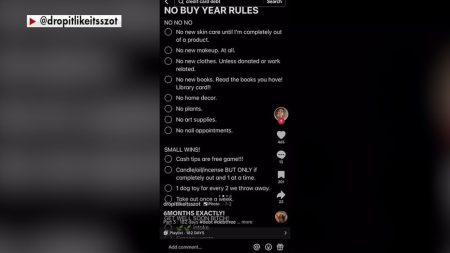Even though the Federal Reserve put a break on interest rate hikes in September, inflation remains stubbornly high and it may offer close to no relief to the average American dealing with credit card debt.
In fact, credit card debt increased to more than $1 trillion in the second quarter of 2023, according to data from the Federal Reserve Bank of New York. And the average American has more than $7,900 in credit card debt, according to research by Annuity.org.
In addition to that debt, interest rates remain high. The average APR on a credit card is 20.68%, according to data from the Federal Reserve Bank of St. Louis. That’s up from 14.58% in August 2020. However, many Americans have been forced to rely on credit cards more than ever before. Specifically, 38% of Americans said they’d likely need to use a credit card to cover expenses they previously weren’t using it for, a survey by Quicken said.
“Credit cards are the most prevalent form of household debt and continue to become even more widespread,” the NY Fed said in a blog post. “Consider that there are 70 million more credit card accounts open now than there were in 2019, before the pandemic.”
And as Americans move deeper into the presidential election season, many see the economy in bad shape and only getting worse. More than half (71%) of Americans see the economy as either not so good or poor, a poll from Quinnipiac University said. And the economy was the top concern when deciding who to elect president, according to the poll.
“Our research shows an economic divide that is widening among Americans – there is a large group of hard-working people who are still struggling financially,” Quicken CEO Eric Dunn said in a statement. “I’m troubled by the compounding problems facing this group – many of them are living paycheck to paycheck and relying on credit cards they may not be able to afford. It’s clear that strong financial planning is more important than ever to help Americans break this cycle and start closing the gap.”
Nonetheless, there are many ways to pay off debt quickly.
If you’re struggling with high-interest debt, you could consider paying it down with a personal loan at a lower interest rate which could help you lower your monthly payments. Visit Credible to compare your options without affecting your credit score.
CONSUMER CREDIT INCREASED BY NEARLY $5 TRILLION
How to pay down credit card debt quickly
Americans collectively have amassed a more than $17 trillion in household debt. But there are many ways to pay down debt quickly. Here are some examples.
Personal loans: A personal loan can help those in debt receive large lump sum payments to pay it off. Preferably, consumers should seek lenders that offer the lowest interest rates. The average personal loan interest rate is 11.48%, according to data from the Federal Reserve Bank of St. Louis. But depending on factors like credit scores, consumers can find personal loan rates as low as 5.2%, according to data by Credible. Personal loans are usually paid off in set monthly payments throughout the course of up to five years.
Balance-transfer cards: A balance transfer card allows a consumer to move credit card debt onto a new card that often offers a zero interest grace period that can last as long a year or longer. Essentially, transferred credit card debt can be paid off with fixed monthly payments at zero interest. But it’s important to pay off the transferred balance within the grace period as interest and fees could accumulate otherwise.
Credit card payment strategy: Consumers can also look to the snowball method (focus on paying off debt with the smallest balance first) or the avalanche method (focus on paying off debt with the highest balance first) to eliminate debt strategically. And whenever possible, consumers should pay off their entire credit card balances in full within every billing cycle in order to avoid paying excessive interest and fees.
If you’re struggling with making your monthly payments and managing your budget, you could consider paying off high-interest debt such as credit cards with a personal loan. Visit Credible to speak with a personal loan expert and get your questions answered.
HERE’S HOW TO LOWER YOUR MONTHLY STUDENT LOAN PAYMENTS
Another interest rate hike is possible in 2023
Despite the Fed’s pause on interest rate hikes, inflation remains far from the central bank’s preferred levels and that could mean another interest rate increase before 2023 closes.
“Inflation remains well above our longer-run goal of 2%,” Federal Reserve Chairman Jerome Powell said at a press conference. “We’re prepared to raise rates further if appropriate, and we intend to hold policy at a restrictive level until we’re confident that inflation is moving down sustainably toward our objectives.”
And if the Fed steps up an aggressive stance on monetary policy, it could reflect a significant blow to consumers’ wallets.
“More interest rate increases may be on the horizon,” Michele Raneri, TransUnion vice president and head of U.S. research and consulting, said in a statement. “For that reason, it’s a good idea for consumers to continue to maintain balances that are in alignment with what they know they will be able to make payments on each month, and take into consideration the possibility of further interest rate increases and how those payments may change as a result.”
If you’re ready to wipe out high interest debt, you could consider paying it down with a personal loan at a lower interest rate to help you cut your monthly payments. Visit Credible to get your personalized rate in minutes.
INFLATION IS AFFECTING PARENTS’ ABILITY TO PAY FOR EDUCATION: SURVEY
Have a finance-related question, but don’t know who to ask? Email The Credible Money Expert at [email protected] and your question might be answered by Credible in our Money Expert column.
Read the full article here











